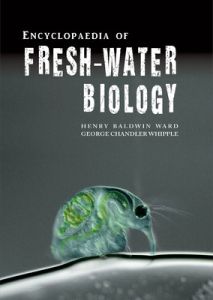
Contents: 1. Introduction. 2. Conditions of existence. 3. Methods of collecting and photographing. 4. Bacteria. 5. Blue-Green algae (Cyanophyceae). 6. The fresh-water algae (excluding the blue-green algae). 7.The larger aquatic vegetation. 8. Amoeboid protozoa (sarcodina). 9. Flagellate and ciliate protozoa (mastigophora et infusoria). 10. The Sponges (porifera). 11. Hydra and other fresh water hydrozoa. 12. The free living flatworms (turbellaria). 13. Parasitic flatworms. 14. The nemerteans. 15. Free living nematodes. 16. Parasitic roundworms. 17. The wheel animalcules (Rotatoria). 18. Gastrotricha. 19. Aquatic earthworms and other Bristle-bearing worms (chaetopoda). 20. The leeches (hirudinea). 21. The fairy shrimps (phyllopoda). 22. The water fleas (cladocera). 23. Copepoda. 24. The ostracoda. 25. Higher crustaceans (malacostraca). 26. The water-mites (hydracarina). 27. Aquatic insects. 28. Moss animalcules (bryozoa). 29. The mollusca. 30. The aquatic vertebrates. 31. Technical and sanitary problems.
The preparation of the present work was undertaken with the purpose of stimulating the study of the material so easily obtainable and of aiding workers of all grades to acquire some definite and precise knowledge of the organisms met in such study. Each chapter has been handled by a specialist on the group and the results achieved by this method have a significance that could not have been attained in any other way. Individual chapters represent a survey of the group treated that is complete for this continent up to the time at which the chapter was closed.
The first few chapters are devoted to a discussion of general biological factors. The exact citation of sources at the close of these chapters will aid the reader to pursue such topics further if desired. Not all discussions on general questions have been confined to the introductory chapters. The chapter on Rotifera, by Jennings, presents an admirable description of life processes, which, although written specifically for that group, applies with appropriate modifications to all groups of many-celled organisms. In the chapter on Copepoda, Marsh has treated with some detail the general question of distribution as illustrated by this group; yet the very factors which he shows to be operative in it are those that lie at the basis of the distribution of most if not all other groups. The discussion of the aquatic vertebrates by Eigenmann is purely biological. The same is true of the chapter on Bacteria, by Jordan, and of that on the higher aquatic plants which are treated by Pond in the physiological (chemicophysical) aspect primarily.
Apart from those just mentioned all chapters conform to the same general plan. Each is devoted to a single group of organisms and opens with a general account of the occurrence and history of the group. The description of the anatomy of the forms treated is very brief and deals chiefly with such features as are of special value in the key. Similarly the life history is given in condensed form. More attention is devoted to the biological relations which at this point are discussed with reference to the entire group, whereas individual features are left for later record under individual species except as they are needed for illustrations of general questions.
Abundant use has been made of figures to illustrate the forms described. Most of the illustrations are new and many of them drawn by the author of the chapter especially for this work.